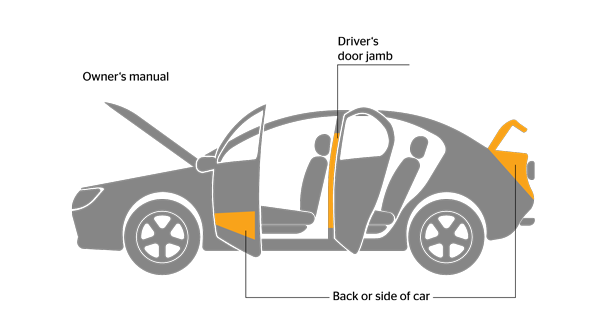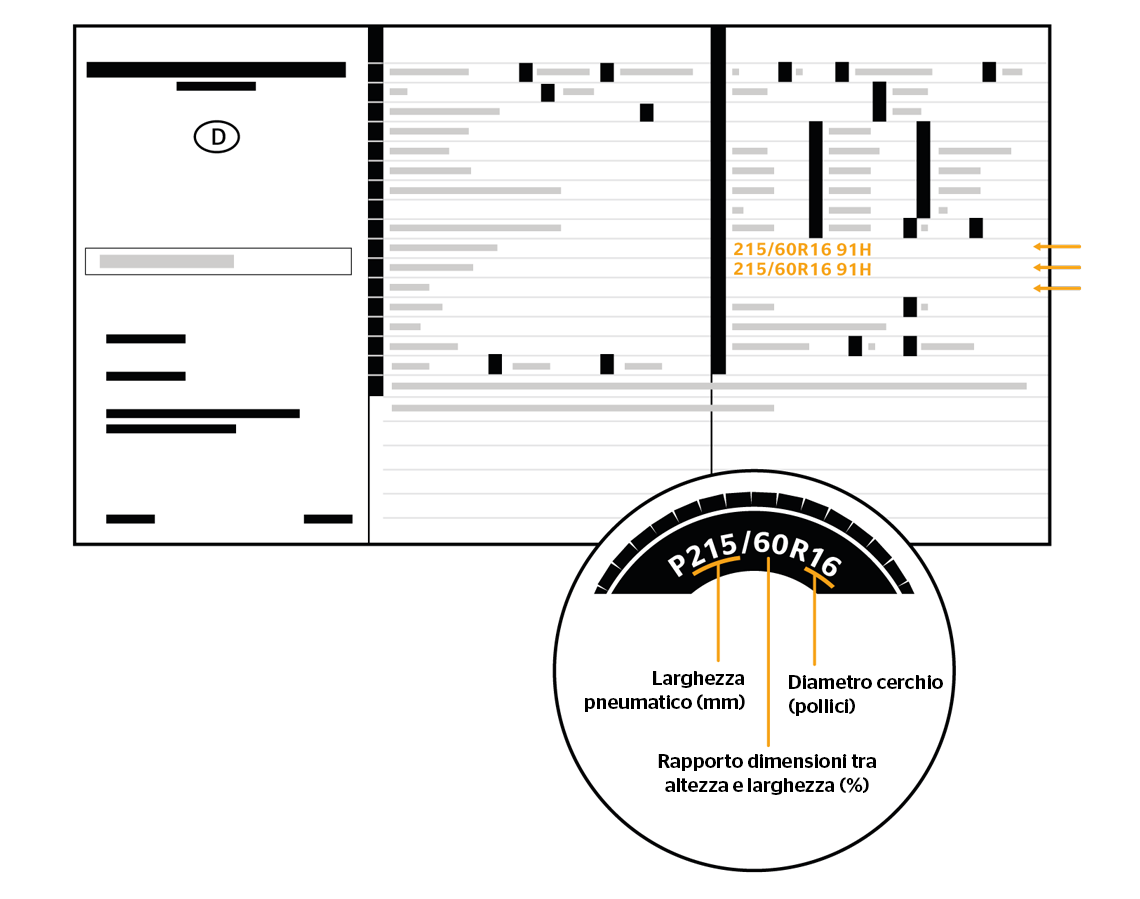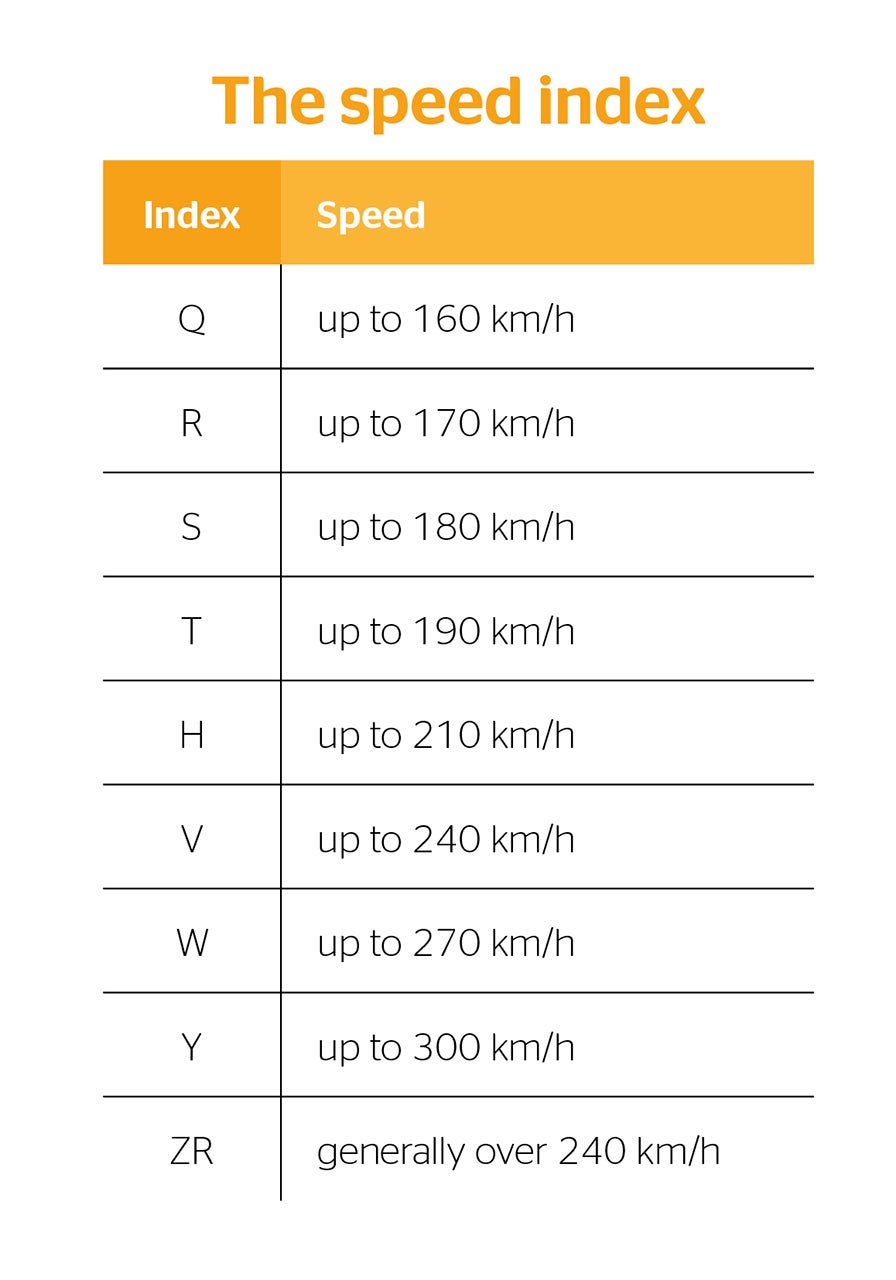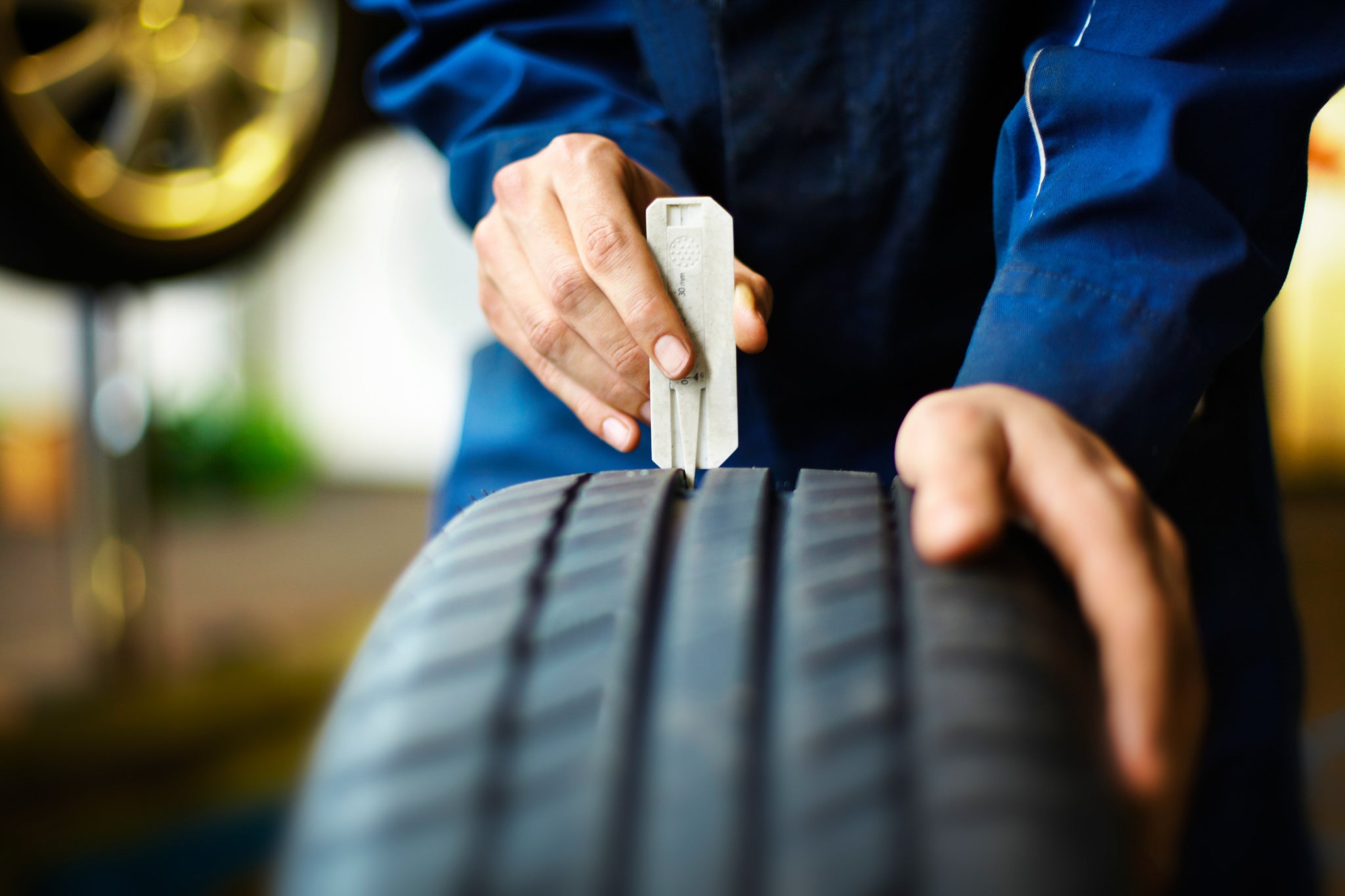
# Tyre Basics
Tyre size
Selecting the right tyre size for your car

When tyres are too old, damaged or worn out, it is time to buy new tyres. There are three things to understand when buying new tyres for your car; the size, speed rating and load index. Making the correct selection is very important to maintain optimal performance, safety and fuel efficiency.
Fortunately, all of this information is easy to find. Within no time you can check the required tyre size for your car. You can locate it inside the driver’s door on your car, inside the fuel flap, or inside the glove compartment. Alternatively, you can consult your vehicle documentation and tyre manufacturer specifications. You can also find the current tyre size on the sidewall of your tyre.


When considering tyre size, there are two simple rules to follow.
Firstly, the replacement tyres should be the same size, load index and speed rating specification as recommended by the vehicle or tyre manufacturer.
Secondly, the replacement tyres must never be of a smaller size or load-carrying capacity than the original specification.
The most convenient option to find the tyre size is by checking the vehicle documents. Here, you will find the recommended tyre size for your car. You will also find the tyre size in the enclosed certificate of conformity (CoC). The certificate provides information on alternative tyre sizes (no. 32). If necessary, the document can also be requested from the manufacturer. Continue reading and find out what other options you have to find the tyre size.
How to read the tyre size on the sidewall
What do all these letters and numbers mean? Here’s all the information on the tyre sidewall quickly decoded:
- The width of the tyres in millimetres
- Percentage height of the sidewall in relation to the width
- Radial construction
- Rim diameter in inches
- Load index (the maximum load capacity of the tyre)
- Speed index (the maximum speed of the tyre)
You will find further information on the sidewall, but they are not important to determine the tyre size. A detailed explanation of the meaning of letters and symbols on the tyre sidewall can be found in our tyre markings article.
The documentation supplied with your vehicle outlines the recommended tyre sizes for your car. Compatibility is determined according to its outer dimensions – diameter/rolling circumference and width – and labelled as a standardised tyre size indicator on the sidewall.
Also, the size must comply with the vehicle’s requirements regarding speed rating and load range. Together, the load index and speed index make up the full service description for a passenger car tyre. It must correspond to the information provided in the vehicle documents.

Load index
The load index rating is the maximum capacity of a passenger car tyre, calculated from the maximum permissible axle load range between two tyres.

Speed index
The speed index rating is also a relevant factor when choosing a tyre. The tyre’s speed capability must be at least equivalent to the top speed of the vehicle. Its speed rating indicates the maximum permissible speed (at full load) of a tyre, and whether it’s appropriate for your car.

Choosing the correct tyre size
Make your tyre size selection in strict accordance with vehicle documents and tyre manufacturer recommendations. If the combined wheel and tyre diameter aren’t correctly matched, there may be drastic differences in ride height and speedometer readings.
For example, fitting 17-inch-diameter wheels to a car that is designed to have 14-inch-diameter wheels will change the ride height. That means the car body will be higher off the ground. There will also be a slight increase in top speed, and the speedometer will no longer be accurate. Last but not least, the car will accelerate slower.
Switching to different tyre sizes can only be done in compliance with all legal requirements and regulations – plus the recommendations of the vehicle, wheel and tyre manufacturers. At the very least, the wheel must have complete freedom of circular motion and the tyre’s adequate load capacity must be observed.
In some cases, a different tyre size can be used, but the same new tyres (same tyre size, tread pattern and tyre age) are required to be fitted across the axles. If you want to make those changes and want to ensure safety, consult your vehicle manufacturer or local Continental dealer. An approved test centre will make the changes in your vehicle documents. If you drive without approval, you must expect an increased risk of accidents and to be fined.
The internal construction of tyres fitted on any vehicle must either be radial or bias-ply. Fitting mixed tyre constructions (bias-ply and radial together) for cars, caravans and other light trucks is unsafe and illegal. The only permissible exception is the use of a spare tyre for an emergency.
Concerning the choice of wheels or rims, the same guidelines apply. Motorists must use the standard wheels or rims approved by the vehicle manufacturer as recommended.

What are the most common tyre sizes?
Common tyre sizes are 175, 185, 195 and 205 tyres. The tyre width is measured in steps of 10 and ranges from 125 mm to 335mm. We will show every available tyre size in our chart:
| Size | Size |
|---|---|
| 125/70 R16 | 135/70 R13 |
| 135/70 R15 | 135/80 R12 |
| 135/80 R13 | 145/60 R13 |
| 145/65 R15 | 145/70 R12 |
| 145/70 R13 | 145/80 R10 |
| 145/80 R12 | 145/80 R13 |
| 145/80 R14 | 155/55 R14 |
| 155/65 R13 | 155/65 R14 |
| 155/65 R15 | 155/70 R12 |
| 155/70 R13 | 155/70 R15 |
| 155/80 R12 | 155/80 R13 |
| 165/50 R15 | 165/55 R13 |
| 165/55 R14 | 165/60 R12 |
| 165/60 R14 | 165/60 R15 |
| 165/65 R13 | 165/65 R14 |
| 165/65 R15 | 165/70 R13 |
| 165/70 R14 | 165/80 R13 |
| 165/80 R15 | 175/50 R13 |
| 175/50 R15 | 175/55 R15 |
| 175/55 R16 | 175/60 R13 |
| 175/60 R14 | 175/60 R15 |
| 175/60 R16 | 175/65 R13 |
| 175/65 R14 | 175/65 R15 |
| 175/70 R13 | 175/70 R14 |
| 175/80 R14 | 185/50 R14 |
| 185/50 R16 | 185/55 R14 |
| 185/55 R15 | 185/55 R16 |
Replacing fewer than four tyres
For optimal safety and performance, replace all four tyres at the same time. While it is possible to switch out less than four tyres at the same time, you should follow a couple of guidelines regarding tyre size.
If only replacing one or two tyres, for example, ensure that each one is the same size and has the same load index and speed rating as specified by the car manufacturer.
When replacing only two tyres, fit both of them to the wheels on the rear axle. The reason for this is that the newer tyres will have much better grip, particularly on wet roads, and reduce the risks of aquaplaning.
Replacing only a single tyre is not advisable, as it can impact vehicle suspension or transmission and produce excessive wear on the tyre tread. But if replacing only one tyre is unavoidable, then pair the single replacement tyre with the tyre that has the deepest tread depth, then fit both to the rear axle.
Related content
-
 2024/08/13Tyre sizeThere are three things to know when buying new tires for your car – the size, speed rating, and load index – and all this information is easy to find.Read more
2024/08/13Tyre sizeThere are three things to know when buying new tires for your car – the size, speed rating, and load index – and all this information is easy to find.Read more -
 2024/10/07Tyre markingsMarkings on the tire sidewall are shorthand for a wealth of information including the load index, speed rating, tire size, construction, and more.Read more
2024/10/07Tyre markingsMarkings on the tire sidewall are shorthand for a wealth of information including the load index, speed rating, tire size, construction, and more.Read more -
 2024/08/22Tread depthThe tire tread grips the road and wears down as you drive. To ensure your safety, measure the tread depth as part of your regular vehicle maintenance.Read more
2024/08/22Tread depthThe tire tread grips the road and wears down as you drive. To ensure your safety, measure the tread depth as part of your regular vehicle maintenance.Read more